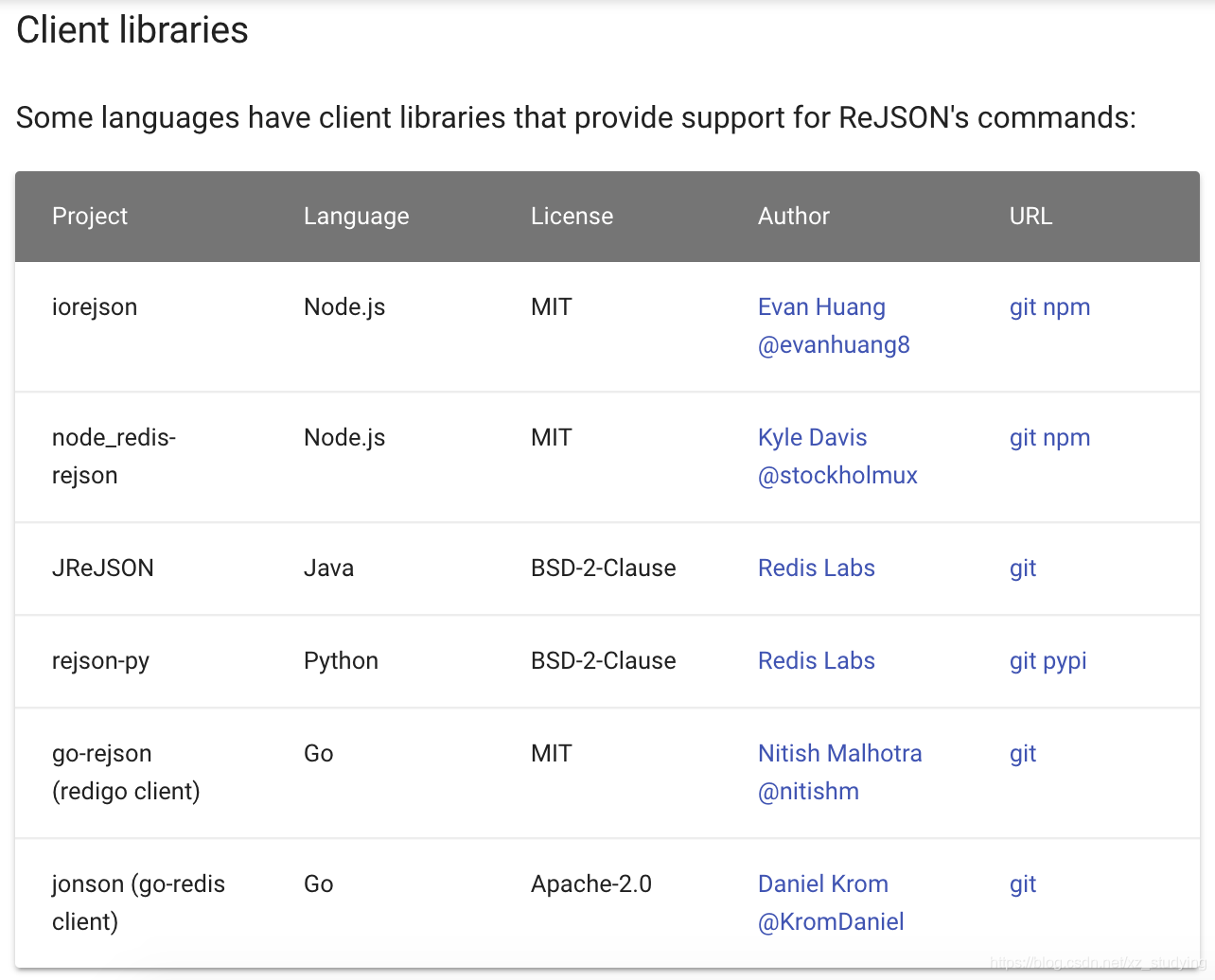社区微信群开通啦,扫一扫抢先加入社区官方微信群

社区微信群
社区微信群开通啦,扫一扫抢先加入社区官方微信群

社区微信群
需要注意的是:
rejson是对redis功能的扩展,使用rejson命令操作的数据,无法用redis命令操作;同样,使用redis命令操作的数据,无法使用rejson操作。因为两者的操作数据格式完全不一样,rejson二进制数据存储的。
在rejson的官网中实现rejson相关功能的开源库如下:

其中golang的开源库有两个,go-rejson和jonson,他们分别使用了redis的开源client库redigo和go-redis。根据rejson的官网使用指南,我们可以知道,rejson如同是redis命令的扩展,如此我们可知go-rejson和jonson不过是在redis上封装了使用的扩展命令而已。你如果对redis比较熟悉的话,你也可以封装个属于自己的rejson库。这里,我们介绍下使用相对较多的go-rejson。
在go-rejson的主页面,我们可以看到有部分功能并没有实现,作者在Issues中提到太忙,没时间维护,需要人帮忙来维护。哈哈,上面我们提到了rejson只是在redigo上的简单命令调用实现,因此我们可以在作者的基础上,仿照基本的格式进行实现。这是我们实现的go-rejson分支,已经实现了其余的功能哦。
如下是我们的实现的部分代码(注释来自于rejson官方命令哦)
//JSON.ARRINDEX return the position of the scalar value in the array, or -1 if unfound.
//JSON.ARRINDEX <key> <path> <json-scalar> [start [stop]]
//The optional inclusive start (default 0) and exclusive stop (default 0, meaning that the last element is included) specify a slice of the array to search.
func JSONArrIndex(conn redis.Conn, key string, path string, scalar interface{}, start int, stop int) (res interface{}, err error) {
name, args, _ := CommandBuilder("JSON.ARRINDEX", key, path, scalar, start, stop)
return conn.Do(name,args...)
}
//JSON.ARRPOP Remove and return element from the index in the array.
//JSON.ARRPOP <key> [path [index]]
//index is the position in the array to start popping from (defaults to -1, meaning the last element).
func JSONArrPop(conn redis.Conn, key string, path string, index int) (res interface{}, err error) {
name, args, _ := CommandBuilder("JSON.ARRPOP", key, path,index)
return conn.Do(name,args...)
}
//JSON.ARRTRIM Trim an array so that it contains only the specified inclusive range of elements.
//JSON.ARRTRIM <key> <path> <start> <stop>
func JSONArrTrim(conn redis.Conn, key string, path string, start int, stop int) (res interface{}, err error) {
name, args, _ := CommandBuilder("JSON.ARRTRIM", key, path, start, stop)
return conn.Do(name,args...)
}
//JSON.OBJKEYS Return the keys in the object that's referenced by path.
//JSON.OBJKEYS <key> [path]
func JSONObjKeys(conn redis.Conn, key string, path string) (res interface{}, err error) {
name, args, _ := CommandBuilder("JSON.OBJKEYS", key, path)
return conn.Do(name,args...)
}
//JSON.OBJLEN Report the number of keys in the JSON Object at path in key.
//JSON.OBJLEN <key> [path]
func JSONObjLen(conn redis.Conn, key string, path string) (res interface{}, err error) {
name, args, _ := CommandBuilder("JSON.OBJLEN", key, path)
return conn.Do(name,args...)
}
其他的方法见go-rejson分支,欢迎star和fork哦。
如果觉得我的文章对您有用,请随意打赏。你的支持将鼓励我继续创作!
